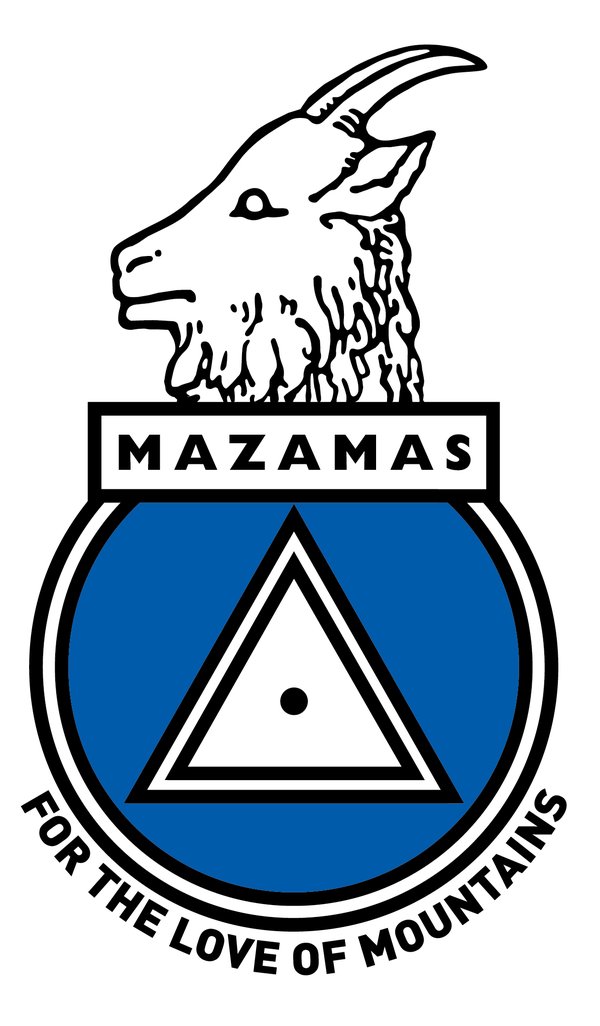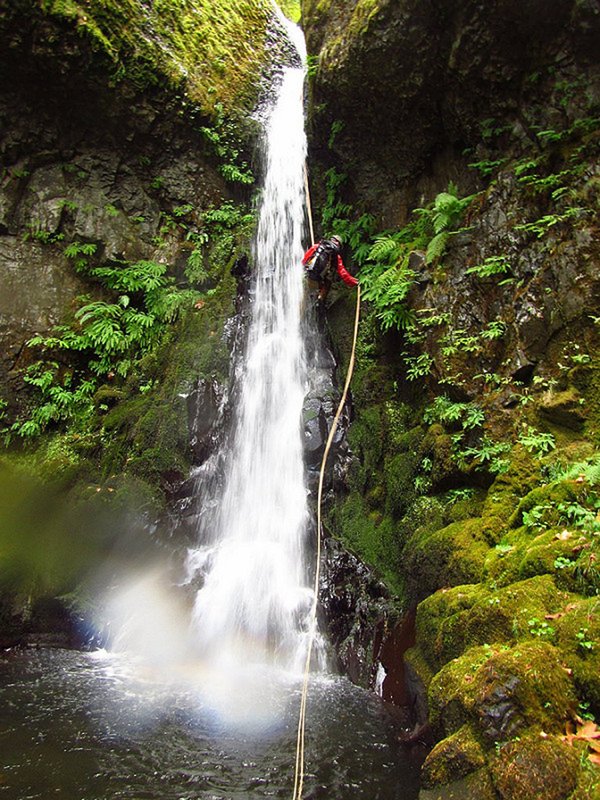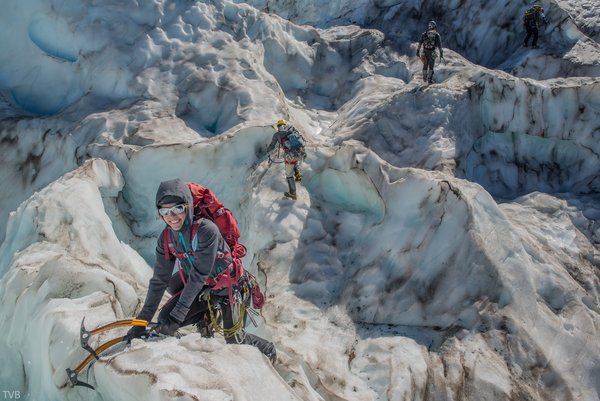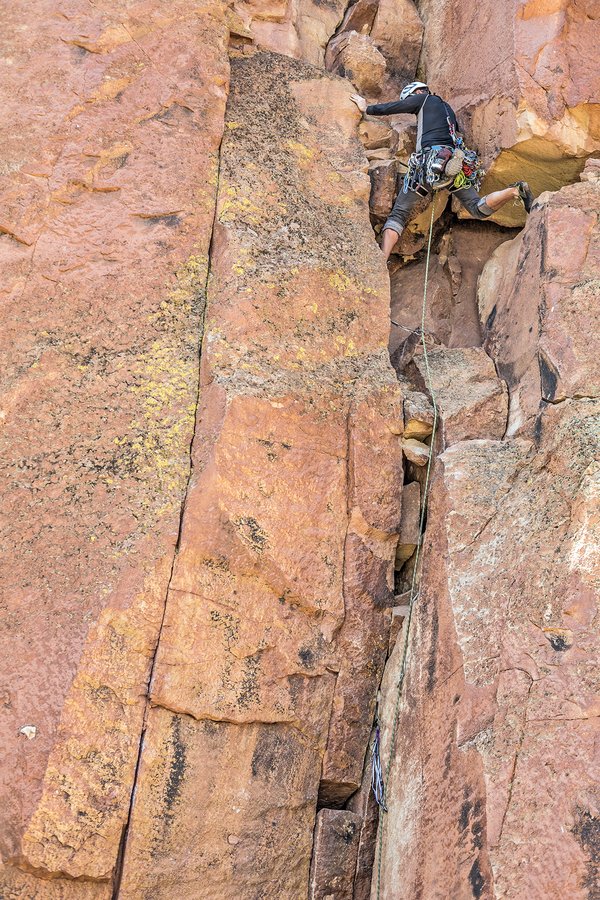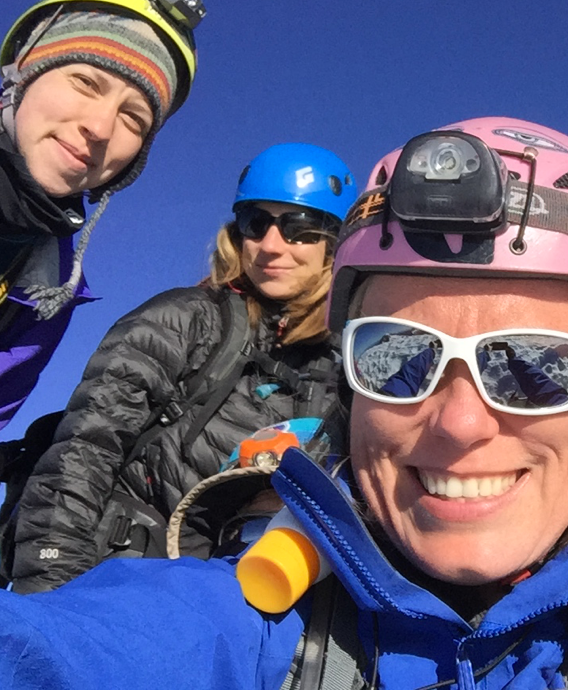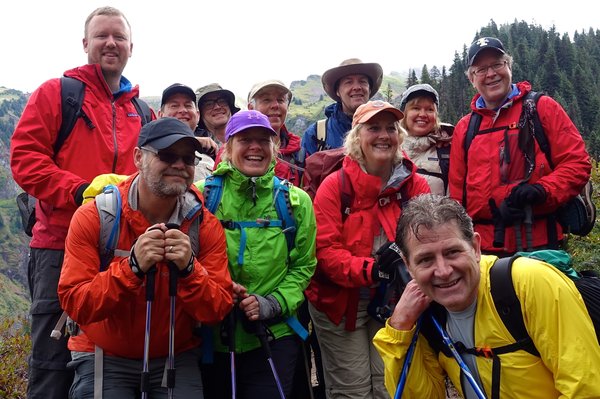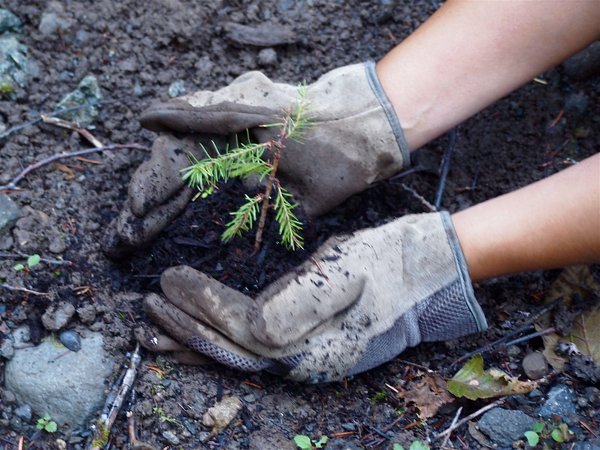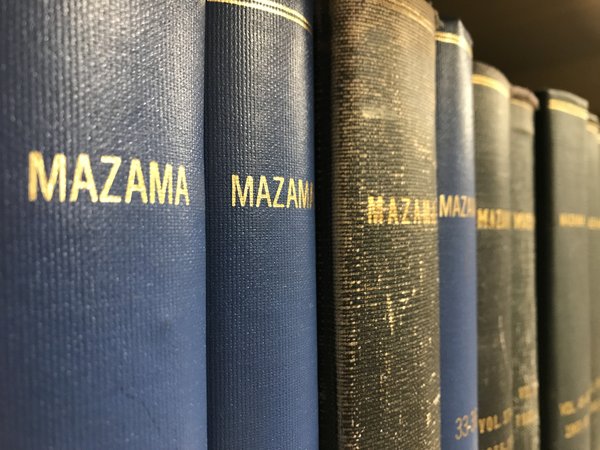Unicorn Peak, the highest point in the Tatoosh Range on the southern end of Mt. Rain-Here National Park, is a fine choice for an easy snow-rock climb. "A good early season ascent", says Beckey. If you try it in late season, most or all of the snow will be gone and the pitch or two of 35-40 degree snow will not be an issue - but the tedious scree will be exposed.
Along with a park entrance fee, all of the Tatoosh peaks offer spectacular views of Mt. Rainier - on clear days. If you are a backcountry skier or boarder, bring your toys if you try this climb in early season (before mid June) - the bowls west of the main peak are beautiful. Climb the summit pinnacle on the east side, which is around to the right (counterclockwise) from where you approach it from the south. This east side is mucho mas easier than the south side of the summit block.
A few small cams and stoppers are a good idea to protect the short rock pitch. Rock shoes are not needed. Short rap off the top. Great glissading in early season! "Tatoosh" means 'nourishing breast " in the local native American language.
Combine with nearby yet seldom climbed Boundary Peak for a doubleheader day of peak bagging, or for a long three peak day, add Stevens Peak at the far east end of the range. Check the Tatoosh Peaks for other options for Tatoosh climbing.
